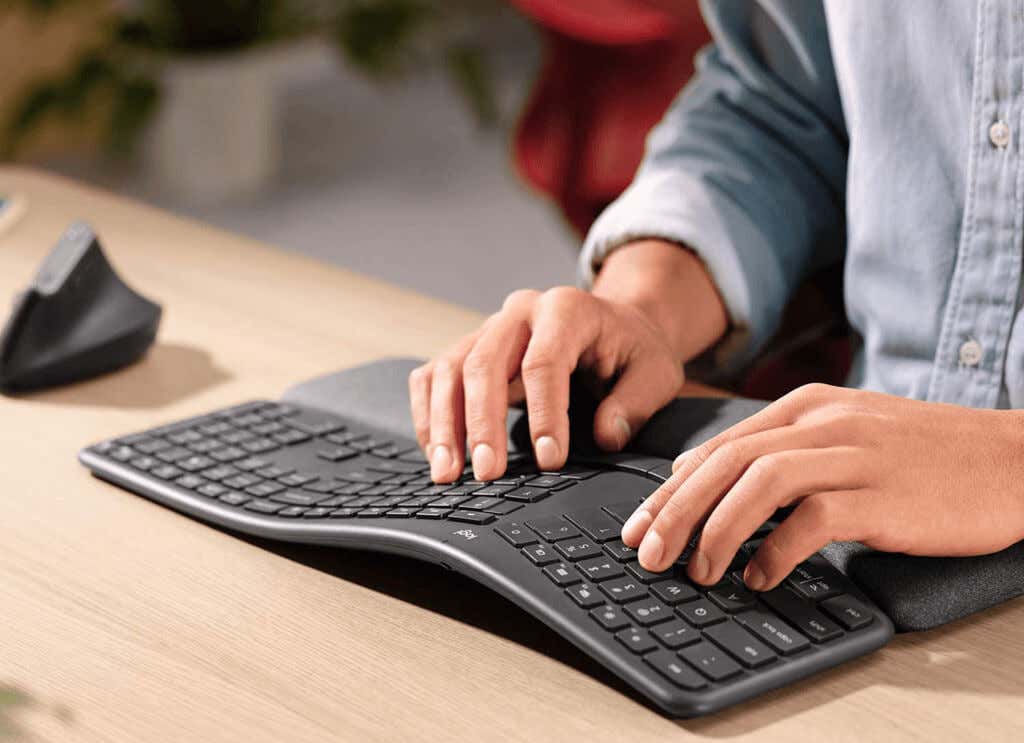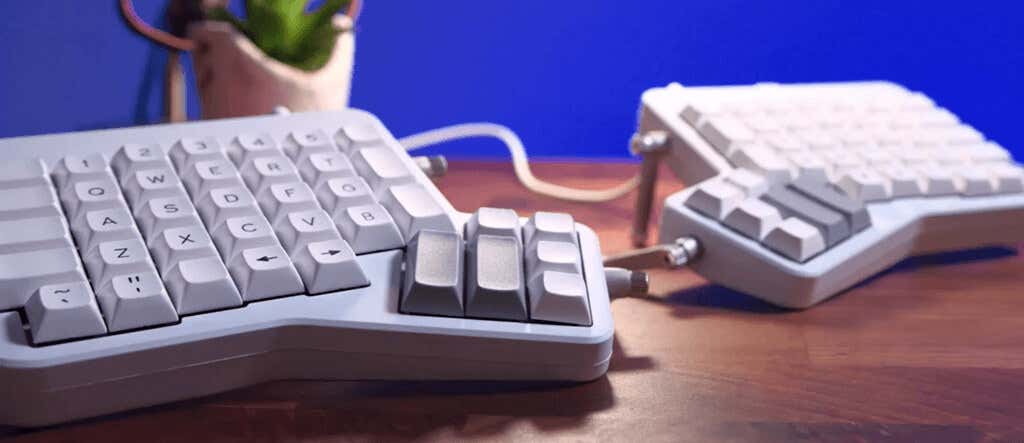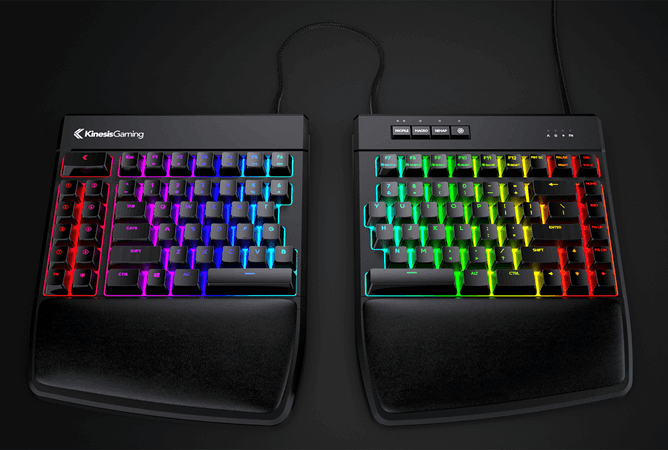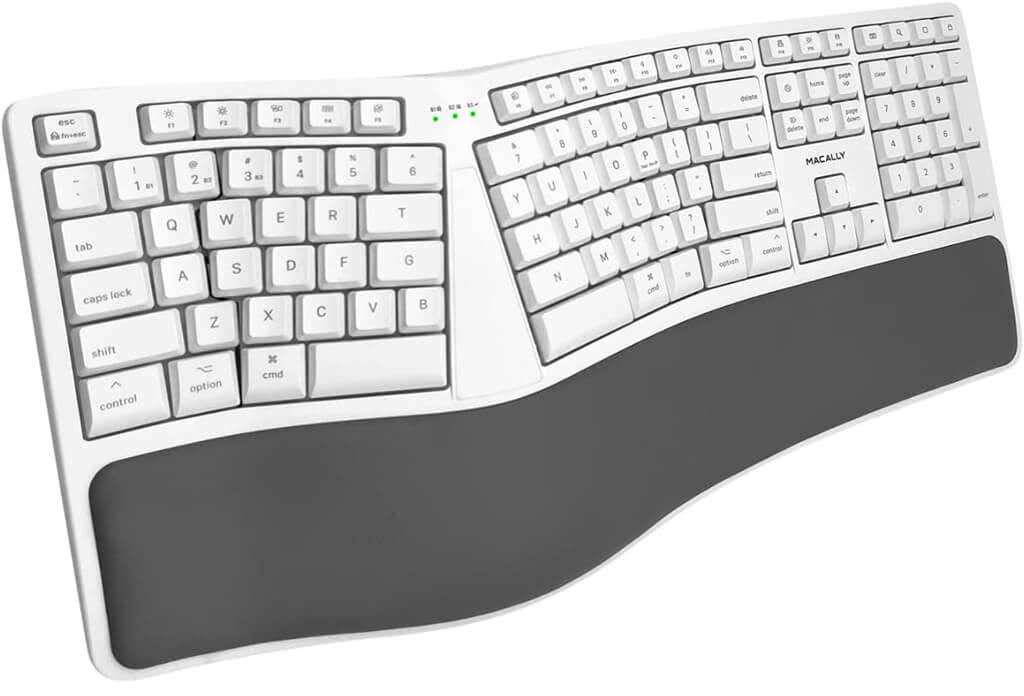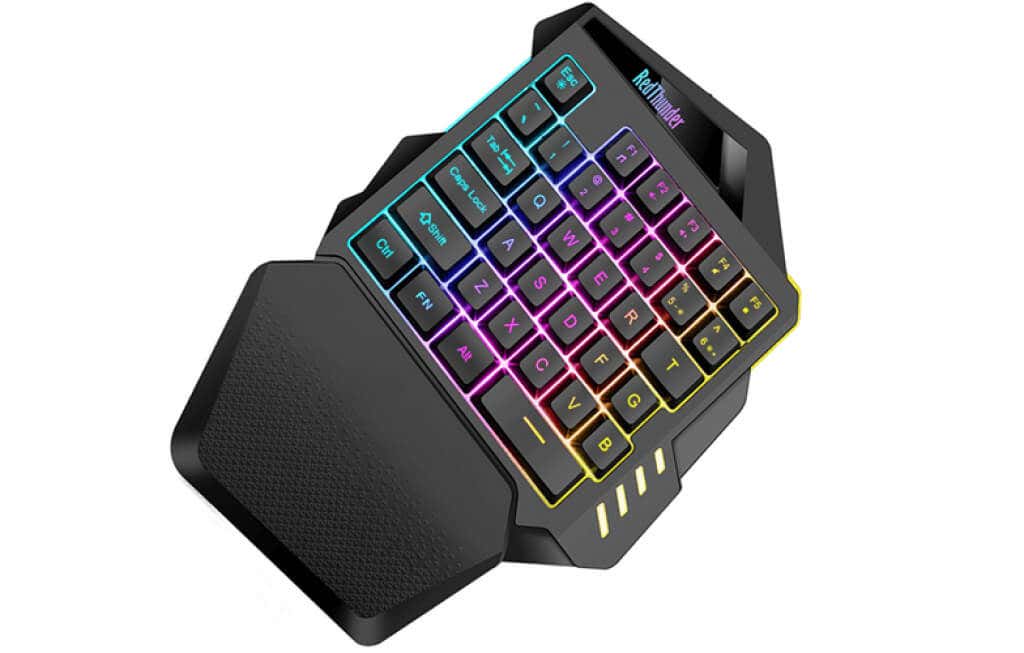Keyboards can cause repetitive strain injuries (RSIs) like carpal tunnel syndrome. That is until ergonomic design came along. If you don’t have an ergonomic keyboard, you should get one. Our top picks are, in our opinion, the best buys.
What to Look For in an Ergonomic Keyboard
Reach out in front of you like a zombie walking. You’ll likely find that your wrists are slightly twisted, so the index fingers are higher than the little fingers. The thumbs are on the same level as the little fingers. You could draw a straight line down your arms ending at the tips of the index fingers. Your thumbs will also be about 4 to 8 inches apart, and there’s no bending of the wrist either inward, backward, upward, or downwards. Is that how they sit on your standard keyboard? Probably not. This is the natural position for our arms and hands, and in this position, you’re less susceptible to RSIs. So the right ergonomic keyboard design should fit that comfortable position as closely as possible. Often, keyboards are bundled with ergonomic mice too. Make sure the mouse works for you. There’s no sense getting the bundle to save money if the mouse hurts you.
Types of Ergonomic Keyboard Designs
Most ergonomic keyboards have configurations including one or more of the following design features to improve your typing experience. Split Design: A keyboard split in the middle to adjust the distance between your hands. This helps straighten the wrists. Adjustable Slope: This feature can prevent bending your wrists too far upward or downward by sloping the keyboard down or up. Tented Keyboard: The midline of the keyboard is higher than the left and right edges, making a tent shape. Tenting helps reduce forearm rotation, preventing strain similar to tennis elbow. Curved or Contoured Keyboard: Gentle u-shaping key positions promote a relaxed, neutral typing position. Wrist Rest or Palm Rest: Built-in or detachable support built into the keyboard prevents pressure on the wrist and heel of the palm. Extended pressure in these areas can cause RSIs. Concave Keys: An indented keytop that accommodates the curvature of the fingertip. Anything that makes for comfortable typing helps. Ortholinear Keys: Key layout is a straight line from top to bottom on the keyboard. This makes it easier to extend fingers in a straight line than have them move side to side. Mechanical Keys: Standard inexpensive keyboards have switch keys, taking more effort to press, resulting in quicker fatigue. The right mechanical keys are more responsive and lessen the load. It’s a satisfying tactile sensation as well. Programmable: Some keyboards have keys that can be programmed like shortcuts or to perform macros. Anything that reduces the number of keys to strike reduces fatigue and strain while making you more efficient. Wireless: A wireless ergonomic keyboard helps you position it comfortably.
Best High-End Ergonomic Keyboard: ErgoDox EZ
Price: Base price is $295; customizations are extra Features:
Split keyboardOrtholinear keysConcave keysMechanical keysAdjustable slopeAdjustable tentingWrist/Palm RestProgrammable keysWirelessFully customizable
If there’s a more customizable ergonomic design keyboard out there, we haven’t found it. The slope, tilt, and tenting are adjustable to your needs. With all the features, especially the ortholinear keys, unique key layering, and no obvious spacebar, there’s a steep learning curve to become proficient with it. Key layering is next-level shift keys, where each key could have up to 32 different outputs. You can also choose from Cherry MX or Kailh line of key switches to meet your tactile needs and wants. Like ErgoDox says, “It’s like a Shift key on steroids.” We think this is the entire keyboard on steroids.
Best Gaming Ergonomic Keyboard: Kinesis Freestyle Edge RGB
Price: $199 Features:
Split keyboardConcave keysMechanical keysAdjustable tentingWrist/Palm RestProgrammable keys
Known for their TKO Tournament Keyboard, Kinesis also makes the ergonomic Kinesis Freestyle Edge. With Cherry MX mechanical switches and RGB individually backlit Cherry MX Brown switches, it sure looks and feels like a gaming keyboard. Add the SmartSet keys that you can use for on-the-fly macros to all the other keys being programmable, and you’ve got a full-fledged, wrist-friendly mechanical keyboard. It is wired, though, so you’ll need a device with a USB port to connect it.
Best Portable Ergonomic Keyboard: Targus Ergonomic Foldable
Price: $40 Features:
Curved keyboardWireless BluetoothRechargeable
Yes, Targus makes keyboards, not just backpacks. The Targus Foldable Ergonomic keyboard will easily fit in a cell phone pocket on a backpack, though. Ideal for students, digital nomads, and other on-the-go types, the Targus Targus Foldable Ergonomic can be programmed to connect to up to 3 devices through Bluetooth wireless connections. The surface is impregnated with Defense Guard antimicrobial, which is reassuring these days. It has a rechargeable 100 mAh battery and battery-life indicator light, so you should never be caught with a dead keyboard.
Best Mac Ergonomic Keyboard: Macally Mac Wireless
Price: $70 Features:
Split keyboardWrist/Palm restAdjustable slopeProgrammable keysCurved keyboardTentedWireless BluetoothRechargeable
Technically, only a keyboard made by Apple is a Mac keyboard. However, Apple doesn’t make a wireless ergonomic keyboard with a cushioned palm rest. Does Apple even make a comfortable keyboard? The look says Mac and so do the 21 MacOS shortcut keys. The built-in number pad is ideal for the office, too. However, you can connect it to three Bluetooth devices to take it home or even on the road with your iPad or iPhone.
Best One-handed Ergonomic Keyboard: RedThunder Wireless Gaming Keyboard
Price: $35 Features:
Wrist/Palm restAdjustable slopeProgrammable keysCurved keyboardConcave keysMechanical keysWireless BluetoothRechargeable
As odd as it seems, any one-handed keyboard is inherently ergonomic. Because you aren’t using two hands, you don’t have to bring them together in front of you in awkward positions. Although there isn’t a number pad, the RedThunder does have function keys. You’ll see it only has the left side of the keyboard on it, but just tapping a key turns them into the right side keys. Of course, it has the RGB backlighting all gaming keyboards need and blue mechanical switches. The 2000 mAh rechargeable battery will keep you through the workday or gaming night.
Best Budget Ergonomic Keyboard: Logitech K350 Wireless Wave
Price: $30 Features:
Wrist/Palm restProgrammable keysCurved keyboardConcave keysWirelessRechargeable
If you’ve only ever seen one ergonomic keyboard before, it probably looked like the Logitech K350 Wireless Wave. It’s also the best wireless keyboard, in our opinion. As commonplace as the office chair, the Logitech K350 is large and roomy for your hands, connecting to your computer via the Logitech Unifying receiver so you can also add your Logitech mouse. Using the Logitech SetPoint software, you can program several functions and shortcut keys. They also boast up to three years of battery life. That’s a lot out of just 2 AAA batteries.
Find Your Fit
Ergonomic keyboard design is becoming necessary as digital work becomes more pervasive, especially with working from home. We’ve shared our top picks for the best ergonomic keyboards for Windows and Apple. Do you use an ergonomic keyboard? Is it one of these or something like the Logitech Ergo k860 or Microsoft Surface ergonomic keyboard? Let us know in the comments, and if you know someone who suffers from typing, send them this article. Their wrists will thank you.
